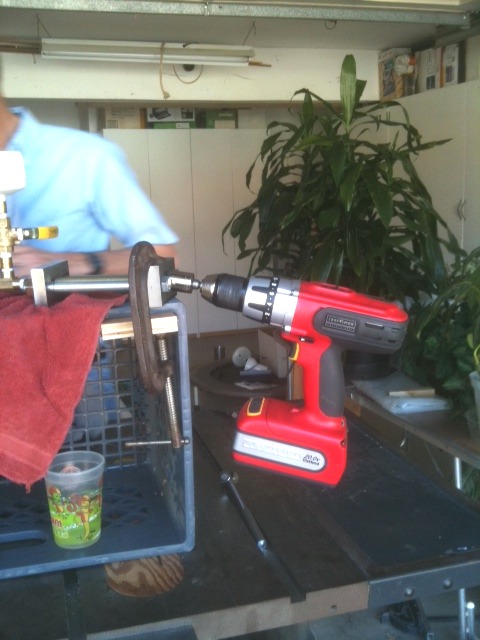Craig Peterson has made significant progress in fabricating the "vacuum chamber" that will be used for testing our avionics at simulated altitude. Craig has obtained a length of 6" PVC pipe, end cap, and aluminum end plate. As well, Craig has purchased a two-stage vacuum pump capable of evacuating the chamber to the extent required. Richard has ordered a precision vacuum gauge (from Omega) which is being shipped to Craig.
Photo of PVC pipe for vacuum chamber and vacuum pump (in box):
Photo of removable aluminum end plate (stock):
(photos courtesy Craig Peterson)
Richard has been working on the design of a wooden "transport cradle" that will be used to transport the motor chambers to the workstation and to the test stand. Each fully loaded chamber will weigh an estimated 152 lbs (69 kg) and will require a minimum of 4 persons for transport.
The Sugar Shot to Space program has received a major "shot in the arm"...our primary DSS sponsor Markus Bindhammer announced that he is donating $10,000 USD for the eXSShot project! This is fantastic news that takes us one step closer to achieving our goal of reaching space using the power of "sugar". We also welcome Markus as our newest member of the SS2S team, in the role of "General Project Support". The Team Selene logo will be phased out, per Markus's request. Thank you so much, Markus, for your generosity and for your belief in our team's ability to achieve the remarkable.





















































